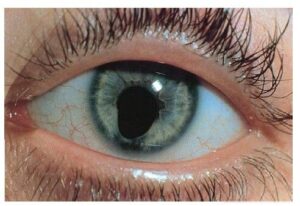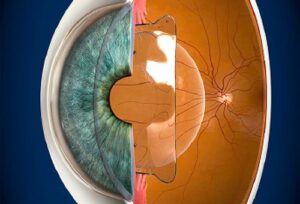
Anushka Super Speciality Eye Hospital
Call: 90044 44422 / 99213 44422 | Timings : 8.30 a.m to 5.30 p.m (Mon-Sat) | Add: Shri Swami Samarth Soc, Kaneri Dhamankar Naka, Bhiwandi




Accredited for Quality Care
Nystagmus: Causes, Types, Testing & Systemic Links Explained
anushka
29 September 2025
Have you ever seen someone’s eyes move rapidly side to side, almost like they can’t hold still? That’s nystagmus. It looks unusual, sometimes even unsettling, but behind those eye movements there’s a lot going on. Nystagmus is more than just “shaky eyes.” It can point towards eye diseases, neurological problems, or sometimes even systemic illnesses.
In this blog, we’ll dive deep into nystagmus. What it is, why it happens, the different types, its relation with systemic illnesses, how doctors test for it, and what can be done about it. I’ll also try to keep it simple, a little casual, so it doesn’t sound like a boring textbook. After all, eye health is something that affects real people, real families.
What is Nystagmus?
In simple words, nystagmus is an involuntary, rhythmic eye movement. The eyes can move side to side (horizontal), up and down (vertical), or even in a circular pattern (rotatory). And no, the person isn’t doing it intentionally. The brain and eye muscles just don’t cooperate properly, leading to these repetitive motions.
Some people are born with it (congenital nystagmus), while others develop it later in life due to diseases or injuries (acquired nystagmus). It can affect vision clarity, depth perception, and sometimes even posture because the brain struggles to stabilize what the eyes are seeing.
Types of Nystagmus
Nystagmus isn’t one single condition. It shows up in different ways, and recognizing the type helps in figuring out the cause and treatment.
1. Congenital (Infantile) Nystagmus
- Usually appears within the first few months of life.
- Eye movements are often horizontal.
- Children may develop a “null point” — a certain head position where their eyes shake less.
- Vision can be reduced, but many children adapt surprisingly well.
2. Manifest vs. Latent Nystagmus
- Manifest nystagmus is always present.
- Latent nystagmus only appears when one eye is covered. This is often seen in children with strabismus (squint).
3. Acquired Nystagmus
Happens later in life due to neurological problems, trauma, or systemic illnesses. It’s important because it may signal serious underlying disease.
- Vestibular nystagmus: Linked to inner ear balance problems. You’ll see this in vertigo patients.
- Gaze-evoked nystagmus: Appears when the patient looks at extreme side gazes.
- Drug-induced nystagmus: Caused by alcohol, anti-epileptics, or sedatives.
- Vertical or rotatory nystagmus: Often points to brainstem or cerebellar lesions.
4. Pendular vs. Jerk Nystagmus
- Pendular: Eye movements are equal in both directions, like a smooth swing.
- Jerk: Slow movement in one direction followed by a quick correction. This is more common.
Causes of Nystagmus
Why do these eye movements happen? The reasons vary, from harmless to serious.
Ocular causes
- Congenital cataract
- Optic nerve hypoplasia
- Albinism (lack of pigment affects vision pathways)
- Severe uncorrected refractive error in children
Neurological causes
- Brain tumors involving the cerebellum or brainstem
- Stroke
- Multiple sclerosis
- Head trauma
- Hydrocephalus
Vestibular causes
- Inner ear diseases like Meniere’s disease
- Labyrinthitis (ear infection)
- Vestibular neuritis
Drug and alcohol related
- Alcohol intoxication (that’s why police check nystagmus in drunk-driving tests)
- Side effects of medications like phenytoin, carbamazepine, or sedatives
Relation of Nystagmus with Systemic Illness
This is where things get interesting. Many systemic diseases can show their first signs in the eye. Nystagmus is one such clue.
- Multiple Sclerosis (MS): Demyelination in brain pathways often causes nystagmus. For some patients, it’s one of the first symptoms.
- Vitamin B12 deficiency: Severe deficiency affecting the nervous system can result in eye movement disorders.
- Thyroid disease: Thyroid eye disease may not directly cause nystagmus but contributes to abnormal eye movements.
- Neurological disorders like Parkinson’s or Ataxias: Eye movement abnormalities including nystagmus are common.
- Alcoholism & Drug toxicity: Chronic use damages the cerebellum and inner ear.
So, when a doctor sees nystagmus, they don’t just think “eye problem.” They also think: could this be part of a bigger systemic issue?
Symptoms Patients Notice
Not everyone with nystagmus complains of the same thing. Some adapt, some struggle. Common issues include:
- Blurry vision
- Difficulty focusing
- Dizziness
- Head tilting (to find null point)
- Trouble in low light
- Oscillopsia (feeling like the world is moving/shaking)
How is Nystagmus Diagnosed?
Eye doctors (ophthalmologists or optometrists) use several tools and tests:
1. Clinical Examination
- Careful observation of eye movements in different gazes.
- Cover test to check for latent nystagmus.
2. Visual Acuity Tests
- To measure how much vision is affected.
3. Fundus Examination
- To check retina and optic nerve for abnormalities.
4. Electonystagmography (ENG)
- Electrodes measure involuntary eye movements.
5. Videonystagmography (VNG)
- Infrared cameras track and record eye movements.
6. MRI or CT Scan
- If neurological cause is suspected.
7. Vestibular Function Tests
- In cases linked to inner ear problems.
Instruments Used in Testing Nystagmus
Doctors use both simple and advanced instruments:
- Ophthalmoscope & Slit-lamp – basic eye check.
- Prisms & Maddox rod – to analyze eye position.
- Electronystagmograph – for electrical recordings.
- Video-oculography systems – high-tech cameras.
- Caloric testing equipment – warm or cold water/air in the ear to provoke response, used in vestibular labs.
Management of Nystagmus
Now the big question: can it be treated? The answer isn’t straightforward. Treatment depends on cause.
Optical Aids
- Glasses or contact lenses to correct refractive errors.
- Sometimes, contact lenses work better because they move with the eye, reducing motion blur.
Medications
- Baclofen or Gabapentin are sometimes prescribed for acquired nystagmus.
- In vestibular causes, drugs like betahistine may help.
Surgery
- Eye muscle surgery (like Kestenbaum procedure) to reduce abnormal head posture by shifting null point.
Vision Therapy
- Exercises to improve control in some patients.
- Especially useful for children with congenital nystagmus.
Treat the underlying cause
- Remove cataract, treat multiple sclerosis, correct nutritional deficiency.
- Managing systemic illness often improves nystagmus symptoms.
Living with Nystagmus
Many patients, especially children, learn to adapt. They may hold their head in a funny position or tilt slightly, but that’s their way of finding comfort. Supportive care, counseling, and explaining the condition to family and teachers makes life easier. Social awareness also helps reduce stigma.
FAQ
1. What is nystagmus in simple words?
Nystagmus is an eye condition where the eyes move uncontrollably in a rhythmic way, side to side, up and down, or circular.
2. Is nystagmus curable?
It depends. Congenital nystagmus usually can’t be fully cured, but vision aids, surgery, or therapy can improve quality of life. Acquired nystagmus may improve if the underlying cause is treated.
3. Can stress cause nystagmus?
Stress itself doesn’t cause nystagmus, but it can make symptoms more noticeable. Neurological or vestibular problems are the real culprits.
4. Which diseases cause nystagmus?
Diseases like multiple sclerosis, stroke, brain tumors, inner ear problems, and congenital eye disorders can cause nystagmus.
5. Can people with nystagmus drive?
Mild cases may drive if their vision meets legal standards. Severe nystagmus affecting clarity or causing oscillopsia may disqualify.
6. Is nystagmus genetic?
Yes, congenital nystagmus often has a genetic component. Family history increases risk.
7. What tests are used for nystagmus?
Tests include visual acuity, ENG, VNG, MRI, and vestibular function tests. Ishihara charts or colour vision tests are not directly related, but often done in comprehensive eye exams.
8. Can systemic illness cause nystagmus?
Yes, illnesses like multiple sclerosis, vitamin deficiencies, and neurological diseases can cause it.
9. What is the difference between jerk and pendular nystagmus?
Jerk nystagmus has a slow drift followed by a fast corrective movement, while pendular nystagmus has equal movements in both directions.
10. Is nystagmus common in children?
Congenital nystagmus is seen in infancy. Early detection and supportive therapy are important for good visual development.
Conclusion
Nystagmus isn’t just an “eye problem.” It’s a window into how the eyes, brain, and body work together. Sometimes it’s harmless and kids adapt beautifully. Other times, it’s a red flag for deeper neurological or systemic illness. Testing with modern instruments helps doctors figure out the exact type and cause, and treatments — whether glasses, surgery, or medication — can make life much better.
The key is awareness. Parents, teachers, and even general physicians should know what nystagmus looks like. Early referral to an eye specialist can make a huge difference.
So, the next time you see those fast little eye movements? Don’t ignore them. They may be telling a bigger story.
Recent Posts


